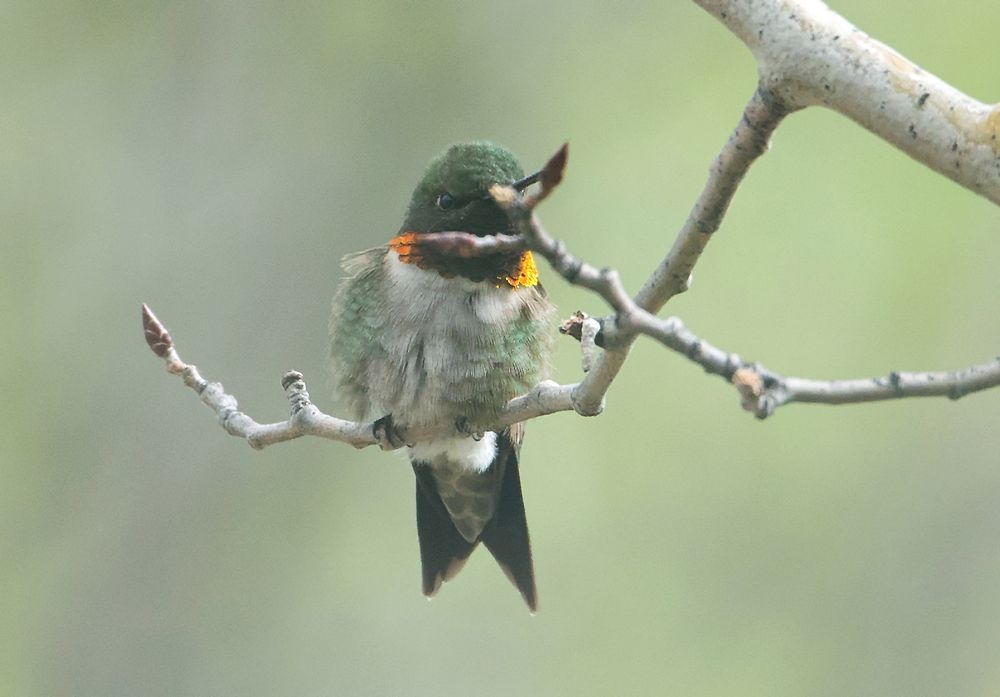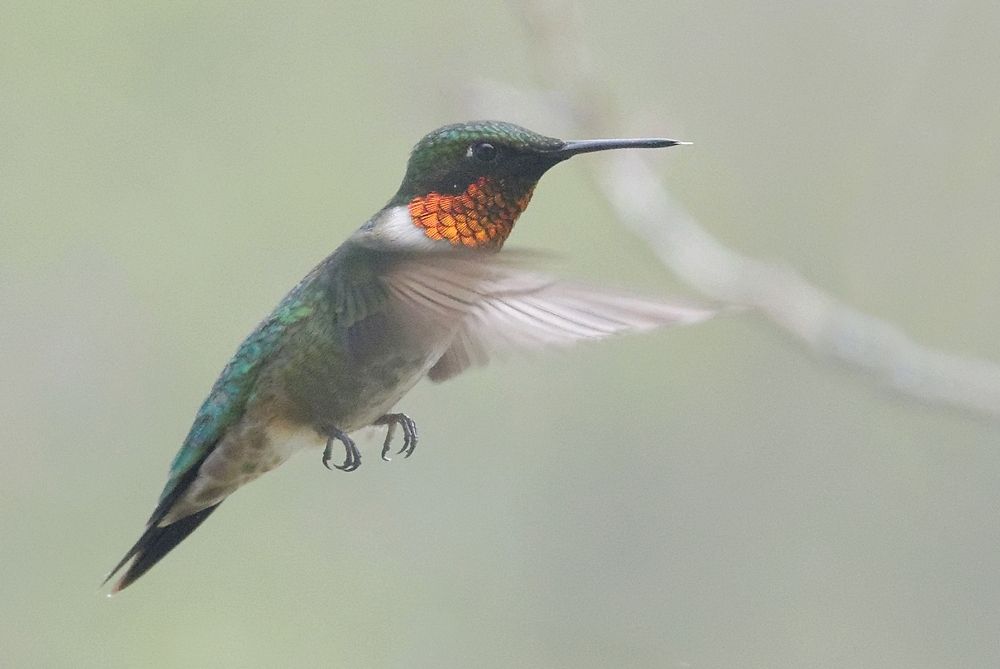Don Kondra
Senior Member
Greetings,
As some of you may know this will be my first summer shooting hummingbirds with Nikon gear after selling off my Olympus stuff.
With only two males in evidence so far and infrequent feeding visits I've been shooting them through the patio door when they visit as I work at my desk.
The bad news is the best I can do is side light but the good news is my editing skills are getting a good work out.
As you can imagine, the 1.7x teleconverter does not work well under these lighting conditions.
So far I have settle on the D800/80-400mm in DX mode, AFS, center point @ 20mm, shutter priority @ 1/1000, iso 1600.
"Darn Branch" or "Peek A Boo"

"Landing Gear Down"

Hopefully it won't be long before the females arrive and I can get outside to shoot them
Cheers, Don
As some of you may know this will be my first summer shooting hummingbirds with Nikon gear after selling off my Olympus stuff.
With only two males in evidence so far and infrequent feeding visits I've been shooting them through the patio door when they visit as I work at my desk.
The bad news is the best I can do is side light but the good news is my editing skills are getting a good work out.
As you can imagine, the 1.7x teleconverter does not work well under these lighting conditions.
So far I have settle on the D800/80-400mm in DX mode, AFS, center point @ 20mm, shutter priority @ 1/1000, iso 1600.
"Darn Branch" or "Peek A Boo"

"Landing Gear Down"

Hopefully it won't be long before the females arrive and I can get outside to shoot them
Cheers, Don

